- The BRICS emerged to try to counterbalance the economic hegemony of the West;
- The group’s power can affect the global economy, but the initial objectives have not yet been achieved;
- With several fluctuations in the global geopolitical scenario, the BRICS economy has declined since its founding and countries are seeking to recover.
A group emerged with the main objective of economic cooperation between emerging countries, as a consequence wanting to displace Western hegemony, mainly from the United States and the European Union. Over the years it has gained undeniable symbolic strength, considering the different aspects that make their decisions become very important globally. These are the BRICS.
Despite the creator of the acronym himself having stated that the organization – not official as an economic bloc – has not achieved its objectives defined in the past decade, only gaining superficial strength, the BRICS continue to meet annually in pursuit of their objectives.
But after all…

What are the BRICS and how the group came about
BRICS is an international cooperation alliance between member countries, which holds annual meetings, known as summits, to align the interests of each nation in all aspects, whether economic or social.
The term Bric came into use after renowned British economist Jim O’Neill published an article, in the early 2000s, about the importance of emerging countries, such as Brazil, Russia, India and China for the world economy.
Thus, during a United Nations General Assembly in 2006, these countries met through foreign ministers to create cooperation agreements between them. Only in 2009 did the heads of state of each country begin to meet, but never formalizing the organization as an economic bloc.
In 2011, South Africa joined the group, causing the acronym to become what we know today, BRICS, with the S being derived from the country’s English name: South Africa.
As a main objective, the BRICS seek to cooperate so that their nations develop socioeconomically, in addition to combating inequality, unemployment and poverty. Furthermore, the organization seeks to free itself from the economic and power hegemony of the United States, trying to shape the world to its own benefit, reducing dependence on the North American country.
Which countries are part of the BRICS and what is the role of each one in the group?
The acronym BRICS represents the initial of the name of each of the group’s countries, being Brazil, Russia, India, China and South Africa. They are considered emerging countries in a developing situation, with the HDI (Human Development Index) above that of underdeveloped countries, but still in the development process.
Furthermore, the economies of these countries are important on the global stage, considering that they are major exporters of raw materials, fuels, automobile parts, automobiles, industrialized products and electronic equipment in general.
Brazil, for example, is considered a major exporter of soybeans, iron and oil. Russia’s economy is based on the export of oil, natural gas and coal. India exports agriculturally derived products and has increased the production and export of electronics. China, in turn, is considered the “factory of the world” due to its large exports of electronic products and equipment, machines and devices, in addition to having strong rice agriculture. South Africa is mainly based on ores and precious metals.
Since it was created, BRICS has only expanded once by joining South Africa. So, expanding the group is a desire of the BRICS and, by mid-2023, on average 20 countries have made a formal request for membership, asking to join the organization. Argentina, the United Arab Emirates, Saudi Arabia and Iran are some of those accepted at the bloc’s summit in August 2023.
The historic accession of the new countries to BRICS will be valid from January 1, 2024. In addition to those mentioned above, Egypt and Ethiopia were also accepted.
In this way, the new members add to the group, but at the same time benefit from what the BRICS represent in a global context. Saudi Arabia has crucial power in geopolitics as it is the largest oil producing and exporting nation, but it seeks to diversify its economy. Argentina, on the other hand, has Brazil as one of its largest trading partners, but has had constant problems with economic crises in recent decades.
Another new member of the BRICS is Ethiopia, the second largest population in Africa but with a relatively smaller economy than South Africa, currently the only representative of the BRICS in Africa. However, Ethiopia has strong economic ties with Russia and China.
The United Arab Emirates, which has always been an undeniable partner of the USA, seeks to expand its alliances and foreign policies. Finally, Iran, which has the largest natural gas reserves in the world, joins the BRICS to try to counterbalance the presence of Saudi Arabia, a historical rival.
Agreements and cooperation between BRICS member countries
BRICS member countries, over the years, have developed projects and agreements with the aim of uniting and benefiting the organization’s members. To get a practical idea of the group’s actions, it is necessary to understand some of these proposals, such as:
- The New Development Bank (NBD), commonly known as the BRICS Development Bank or just the BRICS Bank, is operated by all member countries and makes loans with the aim of improving the infrastructure of the beneficiary country.
It represents the majority of the practical activities of the group of countries, carrying out infrastructure projects and improving the quality of emerging countries.
Some countries that are not part of the BRICS make up the NDB, such as Bangladesh and Uruguay. In addition to them, Venezuela reinforced its desire to join the group of members.
Former President of Brazil Dilma Rousseff is the current representative of the NBD, and reinforced in mid-2023 that the Bank seeks to expand its members and loans in local currency with the aim of strengthening the members’ market.
- The Contingent Reserves Agreement (CRA) was established in 2015 after the signing and ratification of the Treaty for the Establishment of the BRICS Contingent Reserves Agreement.
The structure was created to guarantee the economic stability of member countries due to possible financial crises, in addition to protecting themselves from problems triggered by the liquidity of an emerging country’s currency.
- The BRICS Payment System is not currently implemented, but has been discussed since the 2015 summit. In it, the countries that make up the BRICS could use a single payment system in their local currency to facilitate transactions and reduce the use of American dollar.
Although the NDB’s chief financial officer, Leslie Maasdorp, has stated that the possible common currency would have a long-term ambition to challenge the dollar, South Africa’s ambassador to the bloc, Anil Sooklal, said there are no plans to replace the dollar.
At the G7 summit in Hiroshima, Brazilian President Lula also reinforced the need for a single currency for the BRICS in order to facilitate commercial transactions and reduce dependence on the dollar.
The head of state returned to the subject after the bloc’s summit in 2023, stating that the BRICS are in no rush to implement the currency, as it is complex and requires studies, but that it is a common desire among all member countries.
- Investments in Education made in 2015 with the aim of making the economy and academic education of member countries develop, in addition to increasing academic cooperation between members.
Why BRICS decisions affect global geopolitics
The BRICS play an important role in the global context due to a set of factors.
In terms of population, the BRICS countries are home to almost half of the world’s population, with two of the countries having more than 1 billion inhabitants, China and India.
Furthermore, China is the second largest economy in the world, behind only the United States, and the group’s member countries are among the largest emerging economies. In terms of global participation, the GDP of the BRICS surpassed that of the G7, becoming more than 31%, while that of the G7, a group made up of Germany, Canada, the United States, France, Italy, Japan and the United Kingdom, fell to 30%.
The BRICS also reinforce a multipolar global scenario, that is, with several poles of power at a global level spread across the globe, opposing the unipolar system led by the United States, which began after the fall of the Soviet Union and the consequent end of the Cold War and lasted for many decades.
How the BRICS of the 2020s are more fragile than the BRICS of the 2010s
However, despite their decisions having global impacts, economist Jim O’Neill, who created the acronym, said in an interview with the newspaper Valor Econômico that the objectives of the BRICS had never actually been achieved and that, despite having their strength in symbolic terms, in practice, the group disappoints.
Brazil, for example, in the last decade, from 2011 to 2020, presented the worst performance of the last 120 years in relation to GDP per capita, after a decade of considerable growth between 2001 and 2010, when the BRICS began to be formed.
In the ranking of the world’s largest economies, between 2010 and 2014, under Lula’s government, the country came to occupy sixth place, but since 2020 it has dropped out of the top 10 with the local political scenario fluctuating after the impeachment of President Dilma, the Covid pandemic -19 combined with a weak and isolationist government by Jair Bolsonaro contributed to the devaluation of the Brazilian currency, inflation and the consequent fall of the Brazilian economy.
The Chinese economy, in turn, grew strongly between 1991 and 2010, with a large increase in its GDP, which reached up to 10% per year. However, this growth began to decline in 2019 with the Covid-19 pandemic, problems in the real estate sector, and government intervention in the country’s large private companies.
Currently, China is experiencing considerably lower growth than the average of recent decades and high unemployment among young people.
Russia, like its BRICS partners, was growing in the early 2010s. However, it began to experience economic problems that were worsened by international sanctions after the illegal annexation of the Crimea region in 2014, which belonged to Ukraine.
With the invasion of Ukraine in 2020 and new international sanctions against Moscow, the country’s economy has suffered even more. Furthermore, Russia has lost its largest gas importer, Europe, which contributes to the country’s economic weakness.
Unlike other BRICS countries, India’s economic situation has improved compared to the past decade. In 2023, the country occupies seventh position among the largest economies in the world, ahead of Italy, Brazil and Canada. The International Monetary Fund (IMF), for example, projects growth of 5.9% for the Indian economy, highlighting that, if added to China, the two countries could represent more than half of world economic growth in 2023.
Finally, South Africa is facing an energy crisis that directly affects the country’s economy, infrastructure and society, causing unemployment, impacting small businesses and the population who spend hours without electricity, in addition to scaring away potential investments in the country. .
In short, with the exception of India, all the original members of the BRICS have more fragile economies than in 2010. At the same time, the USA and the European Union have more resilient economies than in 2013, for example, when both were going through crises.
However, with the entry of new members, the BRICS could eventually challenge Western hegemony if these emerging countries manage to cooperate effectively and overcome historical rivalries such as the disputes between China and India and Iran and Saudi Arabia. Only time will tell whether the BRICS eventually manage to challenge Western power effectively and create a more multipolar world.


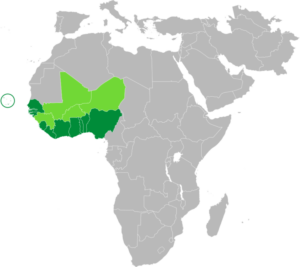


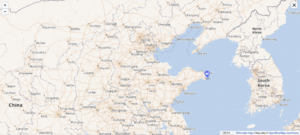




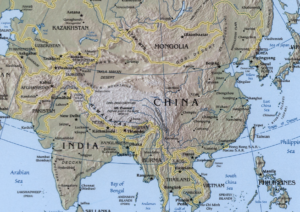
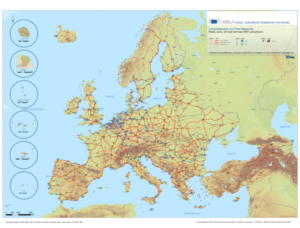


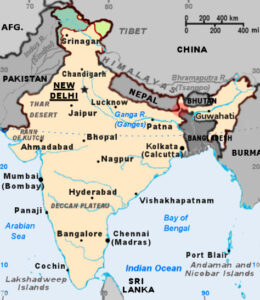

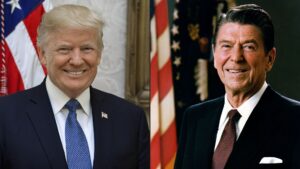
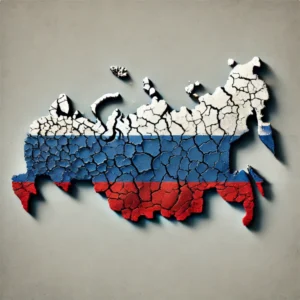
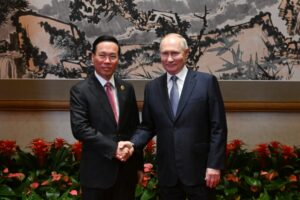
[…] Despite being members of the same economic and cooperation group, bilateral tensions between China and India challenge the unity and objectives of BRICS. […]
[…] attempt to create a multilateral security coalition in Asia also aligns with efforts to strengthen the BRICS, a group of large emerging economies that includes Brazil, Russia, India, China and South Africa. […]